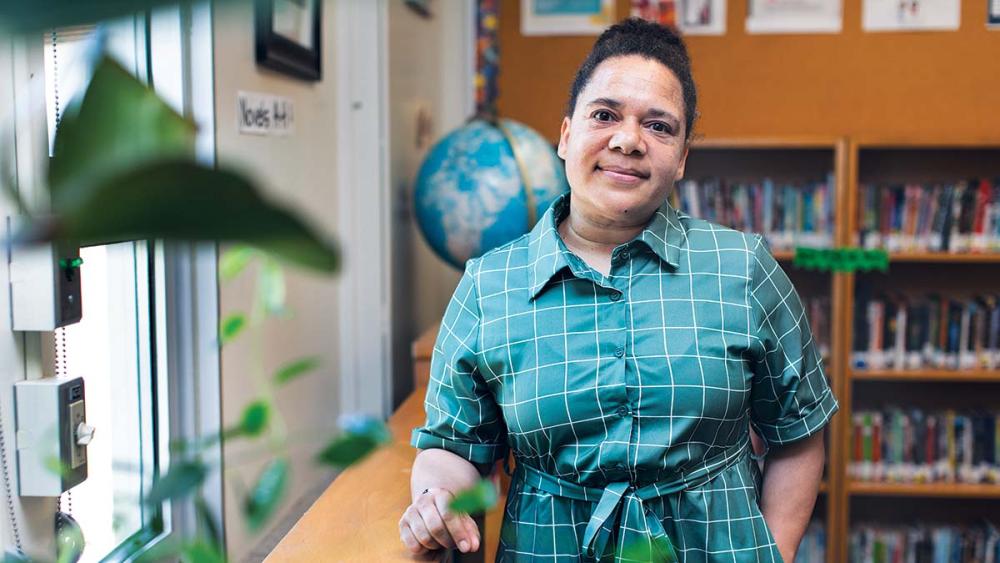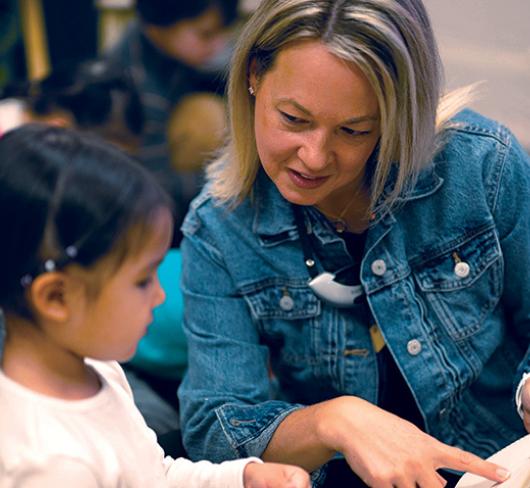
Class Size is Not Just a Number
For 25 years, I’ve had the privilege of being a public elementary school teacher in Toronto. I’ve guided generations of learners, collaborated with families and witnessed the evolving challenges facing our education system. One issue that has remained stubbornly unresolved and only grown worse is class size.
In the private school sector, small class sizes are a celebrated feature, often highlighted on glossy brochures promising individualized attention and better student outcomes. Yet in the public system, when educators speak up about overcrowded classrooms, we are too often met with accusations of selfishness or laziness. These claims suggest we are simply seeking lighter workloads, which couldn’t be further from the truth.
Back in April 2019, before the world shut down due to COVID-19, I stood shoulder to shoulder with thousands of educators across Ontario to protest funding cuts to public education. We marched not just for our rights, but for our students, who were already dealing with worsening mental health, increased violence and rising class sizes. Now, six years and one global pandemic later, these issues have only deepened. Meanwhile, Ontario is facing a teacher recruitment and retention crisis on a scale I’ve never seen in my career.
The connection is undeniable. The provincial government continues to undermine public education by cutting funding and launching media campaigns that erode public trust in teachers. Educators are leaving the profession in droves. And those of us still in the classroom are left to manage untenable conditions. Ultimately, it’s Ontario students and families who are paying the price.
Reduced Individual Attention = Reduced Opportunity
One of the most immediate impacts of large class sizes is the erosion of individual support. With 30 or more students in a room, it becomes impossible to offer the kind of one-on-one interaction that is critical to student success. This disproportionately affects students who already face systemic barriers.
In my years in the classroom, I’ve seen a dramatic rise in the number of students with mental health needs and learning differences. These students need more than just curriculum delivery; they need customized learning environments and educators who have time to observe, adapt and respond. All students need consistent access to mental health supports. When funding cuts eliminate/stretch thin social workers, shrink special education teams and cram more students into fewer classrooms, teachers are left trying to build classroom support systems from nothing.
Flexible seating, sensory accommodations and daily check-ins aren’t luxuries, they are essentials. And yet, due to funding cuts, many of these tools are only made possible by teachers reaching into their own wallets or repurposing items like milk crates and yoga balls to create makeshift solutions.
With the 2023 Language curriculum and its focus on foundational language skills in the Intermediate grades, there seems to be a trend among elementary administrators of requesting that teachers create guided reading conference areas in their classrooms, in addition to regulation spaces to help with social-emotional learning. Meanwhile, there is barely enough room for students, their belongings, tables/desks and chairs, let alone flexible seating options and designated specialized learning areas.
Even something as basic as students being able to maintain a clear line of sight to the teacher and visual resources in an overcrowded classroom can be a challenge. Over a decade ago, I removed the teacher desk in my classroom to make more space for students to move around. But even with all the creative solutions, there’s isn’t enough room or time.
Widening Achievement Gaps and Collapsing Supports
When class sizes swell to 30 students and more, the gap between struggling students and those at or above grade level grows wider. Teachers are forced to choose between focusing on students in immediate crisis, which often leaves those ready for enrichment waiting indefinitely for attention, or prioritizing students at grade level, which can result in those with the greatest need feeling abandoned in large classes and falling further behind. Neither option sits well with educators; we’re set up to fail.
Self-contained special education classrooms and specialized programs used to help tailor learning for individual students. These strategies worked well in part because class sizes were small, staff were well-trained and schools had the support systems in place to implement them. Today, most special education programs have been dismantled as a result of underfunding. The expectation now is that classroom teachers will deliver individualized programming for more students, across more subject areas and in more complex learning environments. We are expected to do all of this without the resources that once made it possible, but instructional strategies alone cannot compensate for the inequities caused by large class sizes.
In 2019-2020, the first year of the pandemic, I was assigned a Grade 6/7 class of 29 students, 13 of whom had significant learning needs that were documented in Individual Education Plans. In previous years, these students had been in self-contained special education classes, which the government had just removed for the intermediate grades. So, there I was with two assigned curriculums of grades 6 and 7 (and Grade 6 being a provincial testing year), and almost half the class on IEPs spanning grades 2 to 7, with no special education qualifications or training. On top of this, many of the students had experienced or were experiencing trauma associated with living in a systemically marginalized community. I was drowning trying to meet so many diverse needs with little to no support.
Trauma-informed teaching necessitates focusing on creating a safe and caring learning environment, which involves understanding trauma’s effects and implementing strategies that help students regulate their emotions and build resilience. In the long term it ultimately enhances students’ ability to learn, but in the short term it can be impossible to prioritize curriculum coverage at the same time. The one saving grace of the pandemic was not having to complete the provincial assessment that year, so I was able to prioritize social-emotional learning strategies, which helped many students continue learning while trying to cope with the uncertainty brought on by the pandemic.
Managing More Students Means Managing More Challenges
As an educator, I’ve seen first-hand how classroom dynamics have shifted in recent years. There has been a noticeable rise in behavioural challenges and interpersonal conflicts, which can be difficult to address meaningfully in classrooms of 30 or more students. With limited time and resources, it becomes challenging to proactively support students through conflict resolution or to intervene before issues escalate.
Technology has added a new layer to these challenges. Many students, even in the Junior/Intermediate grades, come to school already navigating complex social dynamics that unfold online on platforms like Snapchat or other group messaging apps. These interactions often carry over into the school day, and educators find ourselves constantly helping students work through digital conflicts before learning can begin. While technology allows students to stay connected, it also increases their exposure to social stress, online conflict and peer pressure, which in turn affects their focus and well-being in the classroom.
Smaller class sizes would make a significant difference. With more time and space, teachers could support students in developing strong digital citizenship, and build restorative practices into the school day. More space would give students a much-needed reprieve when they feel overwhelmed, as well as the ability to more easily remove themselves from situations of conflict. I have experienced first-hand that as class sizes grow, so do the number of physical altercations and frustrations students direct toward their peers.
Managing challenges is especially important for racialized and systemically marginalized students, including many Black students, who face additional barriers such as implicit bias and disproportionate disciplinary responses. Over the last decade, I have seen a rise in racial slurs and discriminatory language from students toward their peers and even other education staff, with little to no consequences. With large class sizes, it’s very difficult to build strong relationships with all students and families, which are essential to recognizing and addressing microaggressions or harmful language.
Teacher Burnout is a Systemic Issue
Ontario’s teacher shortage didn’t appear out of nowhere; it’s a direct consequence of a system that demands more while giving less.The workload of managing a class of 32 students is enormous. Planning, assessing, reporting and coordinating day-to-day logistics are just the beginning. There have also been major changes to the Language and Mathematics curriculums with very few professional development opportunities provided to review and discuss implementation. Technology has also changed significantly, with many boards using new platforms for reporting, attendance, field trips and expense tracking, again with little to no support for learning to navigate these tools.
As a Junior-Intermediate teacher, the strain is immense. With no hard caps on class sizes in these grades, our classes often exceed 30 students. (Kindergarten, with its own unique challenges, is a topic that deserves its own article.) In 2023, the government created mandatory, non-evaluative mental health literacy modules for grade 7 and 8 students. This was another responsibility given to classroom teachers with no extra time to complete, in addition to guidance and high school transitions.
Professional development opportunities, which are essential for staying current with educational best practices, in some schools have become inaccessible unless teachers can find their own classroom coverage, which is increasingly difficult amid staff shortages. Schools are relying more heavily on noncertified emergency staff, leaving permanent educators to pick up the slack and train on the fly. Most professional development is offered outside of working hours, which is when many teachers catch up on emails, complete marking/descriptive feedback and do program planning.
Emotional labour is also often ignored. Teachers who are racialized, disabled or otherwise outside the dominant culture are frequently the ones leading equity efforts or advocacy work – much of which is unpaid and unsupported. In conversations with other educators, I have learned that in many schools, this kind of work was never prioritized. In others, it has quietly disappeared. As a Black woman educator who has navigated racism and sexism in the workplace, the mental and physical toll can become overwhelming.
This isn’t sustainable. And the exodus from our profession proves it.
Equity Promises Without Structural Change
We talk a lot about equity and inclusion, but without disaggregated data and intersectional planning, these policies ring hollow. As class sizes increase, teachers’ ability to provide meaningful, individualized attention sharply declines, undermining both academic achievement and student well-being – especially for those most in need of support. Even the current Math curriculum, with a strand dedicated to social-emotional learning, falls short and avoids confronting the hard truths about systemic bias.
Teaching is a profession that is grounded in relationships, and my experience has shown me that the better my connection to students and their families, the better the outcomes for students. The pandemic was a collective trauma that impacted all students and staff in different ways. It continues to be felt even six years later. In the classroom, I have noticed post-pandemic that many students are experiencing increased difficulties focusing on tasks, anxiety over speaking and sharing ideas in front of and with their peers, as well as emotional dysregulation and lack of resilience when learning new skills. Mental health curriculums and trauma-informed teaching are only part of the solution. We need smaller class sizes to address these necessary skills directly.
Field trips – a critical part of culturally responsive pedagogy – are increasingly rare in many schools. With inflated class sizes, trip logistics become cost-prohibitive, especially for schools in communities that face systemic marginalization. For example, just renting one school bus for a day can cost upwards of $1,000, not including event admission fees. Families can be asked to contribute $25 or more per student just to cover transportation, which is a significant financial load for many.
Larger class sizes also mean more supervision is required when going on field trips. In Toronto, for students in grades 1 through 8, the ratio of adults to students is 1:15, with many excursion venues recommending or in some cases requiring even more supervision. Without enough, field trips aren’t possible.
Families in marginalized communities can face barriers to participation in their school community for practical reasons (e.g., conflicting work schedules, language barriers if English isn’t their first language) and/ or, personal reasons (e.g., past negative experiences have left them distrustful of school institutions, feeling a lack of connection and understanding from school staff or a lack of positive communication from the school. Smaller class sizes afford teachers more time to build stronger positive relationships with families, which can help strengthen a sense of belonging to the school community.
What Real Support Looks Like
If the government was serious about rebuilding trust in Ontario’s public education system, it would not begin with ads or slogans, it would begin by reducing class sizes.
Smaller classes allow for more frequent and meaningful assessment. They create the conditions for stronger relationships between students, teachers and families. They make space for hands-on learning, outdoor education and a wider range of instructional approaches.
We already know what works. Ontario’s public school teachers have been delivering creative, compassionate and effective instruction for decades. But we cannot continue to make it work without structural change. Smaller classes are not about making our jobs easier, they are about making student learning deeper, safer and more equitable.
The issue of class size is not just about numbers, it is a reflection of our values – of who and what we are willing to invest in. Right now, it’s clear that the government is not valuing the students, educators or communities that sustain public education.
Educators want smaller class sizes not because we want to do less, but because the students of Ontario deserve better.
Cynthia Roulston is a member of the Elementary Teachers of Toronto Local.

